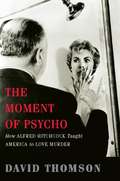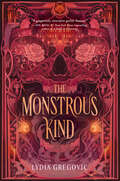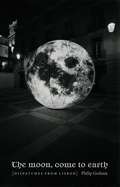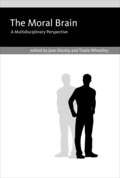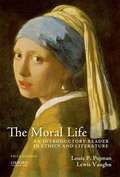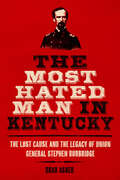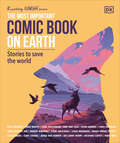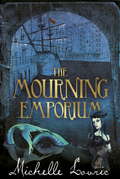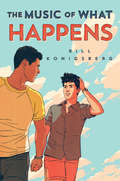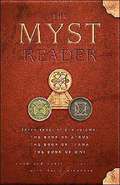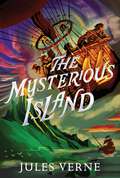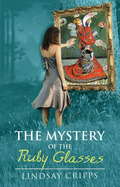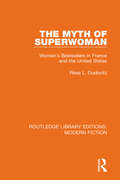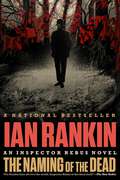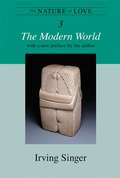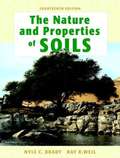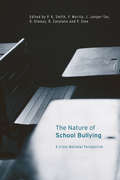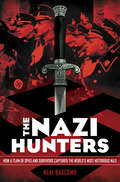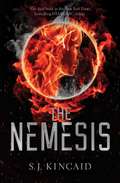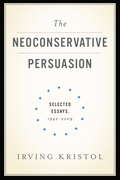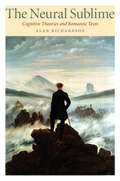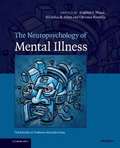- Table View
- List View
The Mold In Dr. Florey's Coat: The Story Of The Penicillin Miracle
by Eric LaxAlexander Fleming's discovery of penicillin in his London laboratory in 1928 and its eventual development as the first antibiotic by a team at Oxford University headed by Howard Florey and Ernst Chain in 1942 led to the introduction of the most important family of drugs of the twentieth century. <P><P> Yet credit for penicillin is largely misplaced. Neither Fleming nor Florey and his associates ever made real money from their achievements; instead it was the American labs that won patents on penicillin's manufacture and drew royalties from its sale. Why this happened, why it took fourteen years to develop penicillin, and how it was finally done is a fascinating story of quirky individuals, missed opportunities, medical prejudice, brilliant science, shoestring research, wartime pressures, misplaced modesty, conflicts between mentors and their protegees, and the passage of medicine from one era to the next. <P> Includes Bibliographic references and extensive notes. At the end of the book, after the index are pages of photo captions with some image descriptions.
The Moment of Psycho: How Alfred Hitchcock Taught America to Love Murder
by David ThomsonIt was made like a television movie, and completed in less than three months. It killed off its star in forty minutes. There was no happy ending. And it offered the most violent scene to date in American film, punctuated by shrieking strings that seared the national consciousness. Nothing like Psycho had existed before; the movie industry-even America itself-would never be the same. In The Moment of Psycho, film critic David Thomson situates Psycho in Alfred Hitchcock’s career, recreating the mood and time when the seminal film erupted onto film screens worldwide. Thomson shows that Psycho was not just a sensation in film: it altered the very nature of our desires. Sex, violence, and horror took on new life. Psycho, all of a sudden, represented all America wanted from a film-and, as Thomson brilliantly demonstrates, still does.
The Monstrous Kind
by Lydia GregovicAn atmospheric, haunting, romantasy inspired by Jane Austen&’s Sense and Sensibility, set in Regency era England about two sisters fighting to hold on to their manor while deadly monsters prowl along its perimeters—perfect for fans of House of Salt and Sorrows and Anatomy: A Love Story.Merrick Darling&’s life as daughter of the Manor Lord of Sussex is better than most. Unlike the commoners, she is immune to the toxic fog that encroached on England generations earlier. She will never become a Phantom—one of the monstrous creatures that stalk her province&’s borders—and as long as the fires burn to hold them back, her safety is ensured. She wants for nothing, yet she will never inherit her family&’s Manor. She must marry smartly or live at the kindness of her elder sister, Essie.Everything is turned on its head, though, when Merrick&’s father dies suddenly. Torn from her New London society life of ball gowns and parties, Merrick must travel back to her childhood home, the Darling estate of Norland House, and what she finds there is bewildering. Once strong and capable, Essie is withdrawn and frightened—and with good cause. A recent string of attacks along the province&’s borders has turned their formerly bucolic countryside into a terrifying and unpredictable landscape. The fog is closing in and the fires aren&’t holding, which makes Merrick and Essie vulnerable in more ways than one. Because the Phantoms are far from the only monsters in Merrick&’s world, and the other eleven Manor Lords are always watching for weakness.Revealing her and her sister&’s current state to the rest of the Manors is out of the question, but when Essie goes missing, it&’s clear that Merrick needs help. Only, who can she trust when everyone seems to be scheming, and when all she holds true feels like it&’s slipping right out of her grasp?
The Moon, Come to Earth: Dispatches from Lisbon
by Philip GrahamThe author offers an expanded edition of a popular series of dispatches originally published on McSweeneys, an exuberant yet introspective account of a year's sojourn in Lisbon with his wife and daughter.
The Moral Brain: A Multidisciplinary Perspective (The\mit Press Ser.)
by Jean Decety Thalia WheatleyAn overview of the latest interdisciplinary research on human morality, capturing moral sensibility as a sophisticated integration of cognitive, emotional, and motivational mechanisms.Over the past decade, an explosion of empirical research in a variety of fields has allowed us to understand human moral sensibility as a sophisticated integration of cognitive, emotional, and motivational mechanisms shaped through evolution, development, and culture. Evolutionary biologists have shown that moral cognition evolved to aid cooperation; developmental psychologists have demonstrated that the elements that underpin morality are in place much earlier than we thought; and social neuroscientists have begun to map brain circuits implicated in moral decision making. This volume offers an overview of current research on the moral brain, examining the topic from disciplinary perspectives that range from anthropology and neurophilosophy to justice and law. The contributors address the evolution of morality, considering precursors of human morality in other species as well as uniquely human adaptations. They examine motivations for morality, exploring the roles of passion, extreme sacrifice, and cooperation. They go on to consider the development of morality, from infancy to adolescence; findings on neurobiological mechanisms of moral cognition; psychopathic immorality; and the implications for justice and law of a more biological understanding of morality. These new findings may challenge our intuitions about society and justice, but they may also lead to more a humane and flexible legal system.ContributorsScott Atran, Abigail A. Baird, Nicolas Baumard, Sarah Brosnan, Jason M. Cowell, Molly J. Crockett, Ricardo de Oliveira-Souza, Andrew W. Delton, Mark R. Dadds, Jean Decety, Jeremy Ginges, Andrea L. Glenn, Joshua D. Greene, J. Kiley Hamlin, David J. Hawes, Jillian Jordan, Max M. Krasnow, Ayelet Lahat, Jorge Moll, Caroline Moul, Thomas Nadelhoffer, Alexander Peysakhovich, Laurent Prétôt, Jesse Prinz, David G. Rand, Rheanna J. Remmel, Emma Roellke, Regina A. Rini, Joshua Rottman, Mark Sheskin, Thalia Wheatley, Liane Young, Roland Zahn
The Moral Life: An Introductory Reader in Ethics and Literature (Fifth Edition)
by Louis P. Pojman Lewis VaughnIdeal for introductory ethics courses, The Moral Life: An Introductory Reader in Ethics and Literature, Fifth Edition, brings together an extensive and varied collection of ninety-one classical and contemporary readings on ethical theory and practice. Integrating literature with philosophy inan innovative way, this unique anthology uses literary works to enliven and make concrete the ethical theory or applied issues addressed. It also emphasizes the personal dimension of ethics, which is often ignored or minimized in ethics anthologies. The readings are enhanced by chapterintroductions, study questions, suggestions for further reading, and biographical sketches. The fifth edition adds ten new readings, eight of which appear in two new chapters: Feminist Ethics and the Ethics of Care and Global Economic Justice. An updated Companion Website at www. oup. com/us/pojman provides self-quizzes, essay questions, and helpful links for students and reading summaries,a test bank, and PowerPoint-based lecture slides for instructors.
The Most Hated Man in Kentucky: The Lost Cause and the Legacy of Union General Stephen Burbridge
by Brad AsherA revealing biography of Stephen Gano Burbridge, the controversial Union Army general known as the “Butcher of Kentucky.”For the last third of the nineteenth century, Union General Stephen Gano Burbridge enjoyed the unenviable distinction of being the most hated man in Kentucky. From mid-1864, just months into his reign as the military commander of the state, until his death in December 1894, the mere mention of his name triggered a firestorm of curses from editorialists and politicians. By the end of Burbridge’s tenure, Governor Thomas E. Bramlette concluded that he was an “imbecile commander” whose actions represented nothing but the “blundering of a weak intellect and an overwhelming vanity.”In this revealing biography, Brad Asher explores how Burbridge earned his infamous reputation and adds an important new layer to the ongoing reexamination of Kentucky during and after the Civil War. Asher illuminates how Burbridge?as both a Kentuckian and the local architect of the destruction of slavery?became the scapegoat for white Kentuckians, including many in the Unionist political elite, who were unshakably opposed to emancipation. Beyond successfully recalibrating history’s understanding of Burbridge, Asher’s biography adds administrative and military context to the state’s reaction to emancipation and sheds new light on its postwar pro-Confederacy shift.“A solid reassessment of Kentucky’s most controversial and reviled Union general, and one that will help readers understand the state’s complex place (and Burbridge’s complex place) in Civil War history.” —Stuart W. Sanders, author of Murder on the Ohio Belle“A superb biography of one of the most pivotal figures in Kentucky’s Civil War history. . . . There has been a lot of revisionist literature in the last fifteen years on Kentucky’s belated Confederate identity but no work up to now has addressed Burbridge himself. Brad Asher has filled a very important gap in the literature on wartime and postwar memory of Kentucky.” —Aaron Astor, author of Rebels on the Border: Civil War, Emancipation and the Reconstruction of Kentucky and Missouri, 1860–1872“Asher does a terrific job of weaving together the military, political, social, and economic threads that made Kentucky such a complex story in and of itself during the Civil War.” —Emerging Civil War Book Reviews
The Most Important Comic Book on Earth: Stories to Save the World
by Jane Goodall Scott Snyder Cara Delevingne Ricky Gervais Taika Waititi120 inspiring visual stories on environmentalism from key figures, charities, activists, and artists. The Most Important Comic Book On Earth is a global collaboration for planetary change, bringing together a diverse team of 300 leading environmentalists, artists, authors, actors, filmmakers, musicians, and more to present over 120 stories to save the world. Whether it&’s inspirational tales from celebrity names such as Cara Delevingne and Andy Serkis, hilarious webcomics from War and Peas and Ricky Gervais, artworks by leading illustrators David Mack and Tula Lotay, calls to action from activists George Monbiot and Jane Goodall, or powerful stories by Brian Azzarello and Amy Chu, each of the comics in this anthology will support projects and organizations fighting to save the planet and Rewrite Extinction.
The Mourning Emporium (Undrowned Child Ser.)
by Michelle LovricTwo summers ago, Venice was dying and an 11-year-old girl made her first (so she thought) visit to the city where she instantly felt she belonged. Teodora, it transpired, was the undrowned child, destined to save Venice from its long-standing enemy, Bajamonte Tiepolo, the traitor. According to a long ago prophecy, Teo and Renzo (the studious son) were the only people equipped to defeat the baddened magic that the traitor brought to the stricken city. But they couldn't kill him - and so, subdued, but bitter, he returned to his shadowy existence.Now he's back. And in need of a new army, he sets his sights on London - who are weak with mourning the death of their Queen, Victoria. Teo and Renzo find themselves on board a ship for orphans whose course seems mysteriously set for London. Once again, destiny brings them face to face with their enemy, who will stop at nothing to destroy not only London and Venice but the children at the heart of the prophecy that binds him to his failure.
The Mouse and His Child (Faber Children's Classics Ser. #3)
by Russell Hoban"Like the fantasies of Tolkien, Thurber, E. B. White, The Mouse and His Child is filled with symbolism and satire, violence and vengeance, tears and laughter." -- The New York TimesThe images stay with you long after the book is done: the toy mouse and his father, on a journey together joined hand in hand; Manny Rat, the nefarious lord of the junkyard, stalking the toy mice for their clockwork parts; Uncle Frog, spouting wisdom and nonsense from within a glove; and the Bonzo Dog Food dog, repeating himself endlessly on a label, fading away to the last visible dog...Russell Hoban's novel is many things: a stirring adventure story, a sharp-witted comedy, and the moving tale of a father and son struggling to return to a state of grace.Called one of the great works of children's literature of the twentieth century -- but with an audience that spans ages and times -- The Mouse and His Child has been lovingly re-illustrated by Caldecott Medalist David Small for a new generation and a new millennium.
The Music Business and Recording Industry (Third Edition)
by Geoffrey P. Hull Richard Strasser Thomas HutchisonThe Music Business and Recording Industry is a comprehensive music business textbook focused on the three income streams in the music industry: music publishing, live entertainment, and recordings. The book provides a sound foundation for understanding key issues, while presenting the latest research in the field. It covers the changes in the industry brought about by the digital age, such as changing methods of distributing and accessing music and new approaches in marketing with the Internet and mobile applications. New developments in copyright law are also examined, along with the global and regional differences in the music business.
The Music of What Happens
by Bill KonigsbergFrom the award-winning author of Openly Straight, a story about two teens falling in love over a summer that throws everything possible to keep them apart.* "Konigsberg demonstrates once again why he is one of the major voices in LGBTQ literature." -- Booklist, starred reviewMax: Chill. Sports. Video games. Gay and not a big deal, not to him, not to his mom, not to his buddies. And a secret: An encounter with an older kid that makes it hard to breathe, one that he doesn't want to think about, ever.Jordan: The opposite of chill. Poetry. His "wives" and the Chandler Mall. Never been kissed and searching for Mr. Right, who probably won't like him anyway. And a secret: A spiraling out of control mother, and the knowledge that he's the only one who can keep the family from falling apart.Throw in a rickety, 1980s-era food truck called Coq Au Vinny. Add in prickly pears, cloud eggs, and a murky idea of what's considered locally sourced and organic. Place it all in Mesa, Arizona, in June, where the temp regularly hits 114. And top it off with a touch of undeniable chemistry between utter opposites.Over the course of one summer, two boys will have to face their biggest fears and decide what they're willing to risk -- to get the thing they want the most.
The Myst Reader
by Rand Miller Robyn Miller David WingroveThis omnibus edition of the hugely popular Myst trilogy is published to coincide with the release of Myst Revelations, the latest in the line of the bestselling Myst interactive CD-ROM games.The award-winning Myst series is one of the most successful interactive CD-ROM computer games in history with sales of more than 12 million copies worldwide. Myst captivated the world when it was first conceived and created by brothers Rand and Robyn Miller. Its extraordinary success has gone on to spawn Riven, Myst III Exile, and most recently, Uru: The Ages Beyond Myst. Devoted fans of these surreal adventure games gather yearly at "Mysterium" (whose event sites are spreading to other countries) to exchange game strategies, share stories, and meet up with old friends.The Myst Reader is a literary companion to the CD-ROM games and a compendium of the bestselling official Myst trilogy: The Book of Atrus, The Book of Ti'ana, and The Book of D'ni. Devoted fans and new players alike will be delighted to have three books in this mythic saga together for the first time in one value-priced volume, which will be published in time to coincide with the long-awaited release of Myst Revelations.
The Mysterious Island: The Secret Of The Island (The Jules Verne Collection)
by Jules VerneA stolen hot air balloon lands an unlikely crew on a mysterious island far from everything they know in this action-packed Jules Verne classic—now with an arresting new look!Five prisoners of war steal a hot air balloon and escape capture in Virginia during the American Civil War. They fly for several thousand miles before a storm forces them to crash land on an unknown island in the Pacific. There, the marooned men must work together to pool all their knowledge and skill if they wish to survive. But the island has its secrets, and the castaways discover it&’s not as deserted as they thought. A mysterious figure has been watching them. Does it bring salvation or even more danger?
The Mystery of the Ruby Glasses
by Lindsay CrippsThe Mystery of the Ruby Glasses is a clever, original page turner with a series of enthralling, exotic adventures.Shey is staying at her Uncle Ruben?s dusty house full of paintings when she discovers a beautiful old pair of opera glasses, studded with rubies.When Shey looks through the glasses she?s transported into the paintings. Suddenly she?s confronting a dragon and facing a sandstorm in Egypt. But what is Uncle Ruben doing in the paintings?Even more peculiar are the clues left behind by Ruben?s missing wife, Maria. Where will her clues lead Shey and Ruben?
The Myth of Superwoman: Women's Bestsellers in France and the United States (Routledge Library Editions: Modern Fiction #15)
by Resa L. DudovitzReviled by critics but loved by the readers, the bestseller has until recently provoked little serious critical interest. In The Myth of Superwoman, originally published in 1990, Resa Dudovitz looks at this international phenomenon, particularly at the origins of the bestseller system in the United States and France. Her cross-cultural study, including interviews with publishers, literary agents, and bestselling authors, gives a lively picture of the contrasting ways in which the bestseller is produced, marketed, and received in two countries. It pays special attention to the ‘international bestsellers’ of the 1980s, to writers like Judith Krantz, Colleen McCullough, and Barbara Taylor Bradford, all of whose novels are published in the United States, Britain, France, Germany, and Italy. The book presents a general analysis of women’s bestsellers, ranging over a wide variety of novels, from popular nineteenth-century texts in France and the United States to the novels of today. Dudovitz shows how women’s bestselling fiction has, over the last two hundred years, kept pace with the social evolution of contemporary women, culminating in the myth of superwoman in women’s bestsellers of the 1980s. This fascinating account of an important aspect of popular culture will be of great value to students of women’s studies and cultural studies, especially those interested in the myths which structure women’s bestselling fiction.
The Naming of the Dead: An Inspector Rebus Novel (Inspector Rebus #16)
by Ian RankinThe leaders of the free world descend on Scotland for an international conference, and every cop in the country is needed for front-line duty...except one. John Rebus's reputation precedes him, and his bosses don't want him anywhere near Presidents Bush and Putin, which explains why he's manning an abandoned police station when a call comes in. During a preconference dinner at Edinburgh Castle, a delegate has fallen to his death. Accident, suicide, or something altogether more sinister? And is it linked to a grisly find close to the site of the gathering? Are the world's most powerful men at risk from a killer? While the government and secret services attempt to hush the whole thing up, Rebus knows he has only seventy-two hours to find the answers.
The Nature Of Love: The Modern World
by Irving SingerIn the third volume, Singer examines the pervasive dialectic between optimistic idealism and pessimistic realism in modern thinking about the nature of love. He begins by discussing "anti-Romantic Romantics" (focusing on Kierkegaard, Nietzsche, and Tolstoy), influential nineteenth-century thinkers whose views illustrate much of the ambiguity and self-contradiction that permeate thinking about love in the last hundred years. He offers detailed studies of Freud, Proust, Shaw, D. H. Lawrence, and Santayana, and he maps the ideas about love in Continental existentialism, particularly those of Sartre and de Beauvoir. Singer finally envisages a future of cooperation between pluralistic humanists and empirical scientists. This last volume of Singer's trilogy does not pretend to offer the final word on the subject, any more than do most of the philosophers he discusses, but his masterful work can take its place beside their earlier investigations into these vast and complex questions. Irving Singer Library
The Nature and Properties of Soils
by Nyle C. Brady Ray R. WeilThe Nature and Property of Soils is an engaging book for readers. It has an ecological approach that explains the fundamentals of soil science effectively. Chapter topics include Soil Erosion and Its Control, Soil Acidity, Soils and Chemical Pollution, and Organisms and the Ecology of the Soil. For individuals interested in soil and the environment.
The Nature of School Bullying: A Cross-National Perspective
by P. K. Smith Y. Morita J. Junger-Tas D. Olweus R. Catalano P. SleeThe Nature of School Bullying provides a unique world-wide perspective on how different countries have conceptualized the issue of school bullying, what information has been gathered, and what interventions have been carried out. Written and compiled by well known experts in the field, it provides a concise summary of the current state of knowledge of school bullying in nineteen different countries, including: * demographic details * definitions of bullying * the nature and types of school bullying * descriptive statistics about bullying * initiatives and interventions. The Nature of School Bullying provides an authoritative resource for anyone interested in ways in which this problem is being tackled on a global scale. It will be invaluable for teachers, educational policy makers, researchers, and all those concerned with understanding school bullying and finding ways of dealing with it.
The Nazi Hunters: How A Team Of Spies And Survivors Captured The World's Most Notorious Nazi
by Neal BascombA thrilling spy mission, a moving Holocaust story, and a first-class work of narrative nonfiction.This Sydney Taylor Book Award- and YALSA Excellence in Nonfiction Award-winning story of Eichmann's capture is now a major motion picture starring Oscar Isaac and Ben Kingsley, Operation Finale!In 1945, at the end of World War II, Adolf Eichmann, the head of operations for the Nazis' Final Solution, walked into the mountains of Germany and vanished from view. Sixteen years later, an elite team of spies captured him at a bus stop in Argentina and smuggled him to Israel, resulting in one of the century's most important trials -- one that cemented the Holocaust in the public imagination.This is the thrilling and fascinating story of what happened between these two events. Illustrated with powerful photos throughout, impeccably researched, and told with powerful precision, THE NAZI HUNTERS is a can't-miss work of narrative nonfiction for middle-grade and YA readers.
The Nemesis: The Diabolic; The Empress; The Nemesis (The Diabolic #3)
by S. J. KincaidIn the &“intense and captivating&” (Kirkus Reviews) conclusion to the New York Times bestselling Diabolic series, the Empire teeters on the edge of destruction as rumors spread that Nemesis is still alive.Three years ago, Tyrus Domitrian shocked the galaxy by killing the woman he swore to love forever. The woman for whom he upended the Empire. The woman with whom he wanted to build a new and brighter future. Now, the once-idealistic heir apparent has become the cruel Emperor Tyrus, wielding his authority with an iron fist, capable of destroying planets with a single word, controlling all technology with a simple thought. He has bent the Grandiloquy to their knees, and none has the power to stand against him. But there is a muttering among the Excess. They say that Nemesis is not truly gone. They whisper of her shadow spotted in distant star systems. They say that Nemesis lives. That she will rise and rally the people to topple the man who was once her truest love—and is now her fiercest enemy.
The Neoconservative Persuasion: Selected Essays, 1942-2009
by Irving KristolFrom the late founder of neoconservatism, a wide-ranging collection of his best writings
The Neural Sublime: Cognitive Theories and Romantic Texts
by Alan RichardsonWinner, 2011 Alpha Sigma Nu Book Award in Literature and Fine ArtsThe Neural Sublime brings recent work in cognitive neuroscience to bear on some famously vexed issues in British Romantic studies. In exciting and unprecedented ways, Alan Richardson demonstrates how developments in the neurosciences can transform the study of literary history. Richardson presents six exemplary studies, each exploring a different intersection of Romanticism and the sciences of the mind and brain: the experience of the sublime and the neuroscience of illusion; the Romantic imagination and visual imaging; the figure of apostrophe and linguistic theory; fictional representations of the mind and "theory of mind" theory; depictions of sibling incest and neo-Darwinian theories of mental behavior; and representations of female speech and cognitive developmental psychology. Richardson’s insightful analysis opens fresh perspectives on British Romanticism, pointing scholars to new developments in cognitive literary studies. He combines elements of new historicist analysis with original—and much-needed—models for understanding language, subjectivity, and social behavior. Far from signaling a departure from the prevalent critical approaches of new historicism, Richardson argues, cognitive theory presents an essential complement to them.The Neural Sublime features an array of cognitive and neuroscientific approaches, providing an engaging and readable introduction to the emergent field of cognitive literary studies.
The Neuropsychology of Mental Illness
by Stephen J. Wood Nicholas B. Allen Christos PantelisIt is widely accepted that most psychiatric disorders are associated with cognitive impairment and that neuropsychological approaches can help unravel the mechanisms underlying brain function and help us develop a better understanding of these disorders. In this book, a panel of the world's leading experts describe the development of neuropsychological approaches to the investigation, description, measurement and management of a wide range of mental illnesses. Part One explains the rationale for examining neuropsychological processes within clinical disorders, leading into Part Two summarizing and critiquing the methodological approaches to study. Part Three covers each of the major psychiatric disorders and provides a summary of the neuropsychological findings for each condition. The final section brings together the perspectives of neuroscientists, psychiatrists and philosophers. Essential reading for all those studying the healthy as well as the disordered brain, The Neuropsychology of Mental Illness will appeal to specialists from the fields of mental health, psychology, clinical neuroscience and philosophy.

